I recently had the opportunity to stop at Culver Academies and play their nine hole Langford Moreau course. I have now played around 10 Langford Moreau courses and studied many others. With many of L/M's courses in the Chicago area renovated beyond recognition it is a joy to find unaltered examples of their work even if in a state of benign neglect.
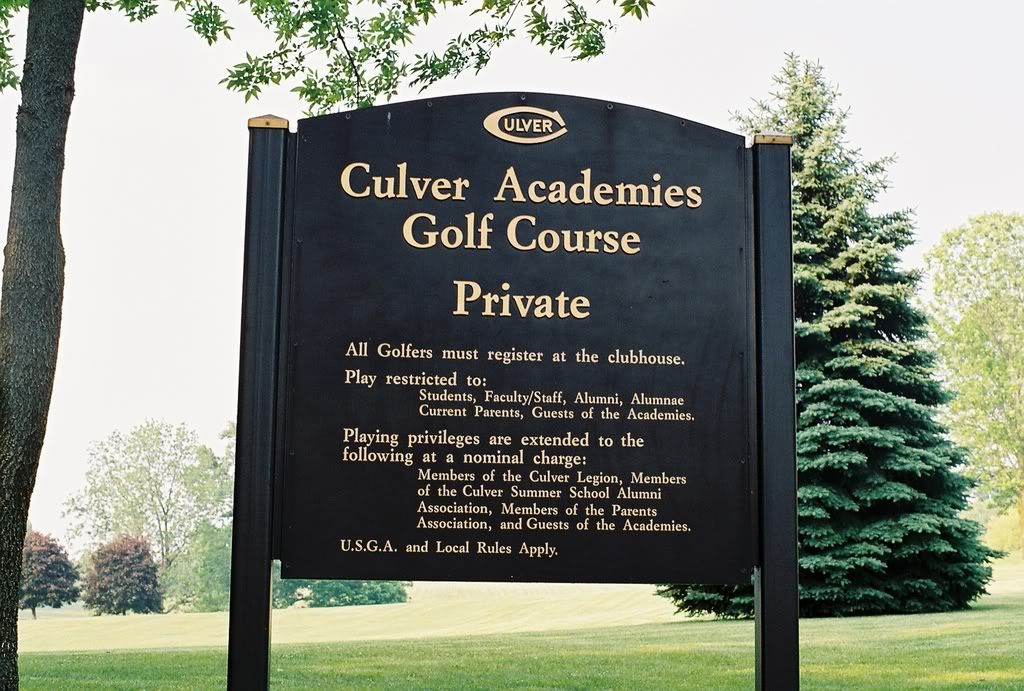
Ran's review does an excellent job of capturing the essence of the course and L/M's design. This is the best land I have seen for a L/M course. Ran nailed it when he described the land as rambunctious. Langford and Moreau's design which took full advantage of such land led to an exhilarating golf experience. The hole numbers I played were completely different from those cited by Ran. Hole number 1 (#5 in Ran’s review) was a par 5 heading north from the clubhouse and Hole 6 (Hole #1 in Ran’s review) was another par 5 heading south from the clubhouse. To avoid confusion I will use Ran’s hole numbers.
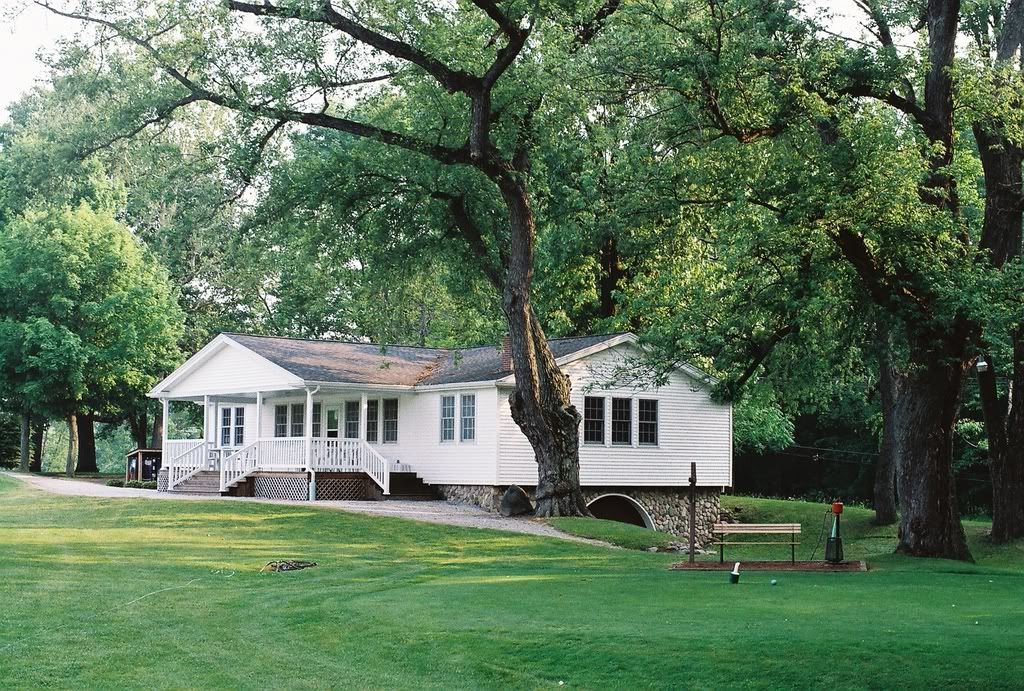
Rather than try to review the course (which Ran has already done so well) I will compare it to other L/M designs pointing out common motifs and design riffs that L/M used in a variety of different ways on their courses.
Hole #1
As this hole demonstrates, L/M had an affinity for blindness, semi-blindness and short par 5's. Starting from an elevated tee with views of Lake Maxinkuckee, the round starts with a drive across a wide valley. As shown in the photo, a blind second follows. Note the large bunker on the left that shields the left side approach.
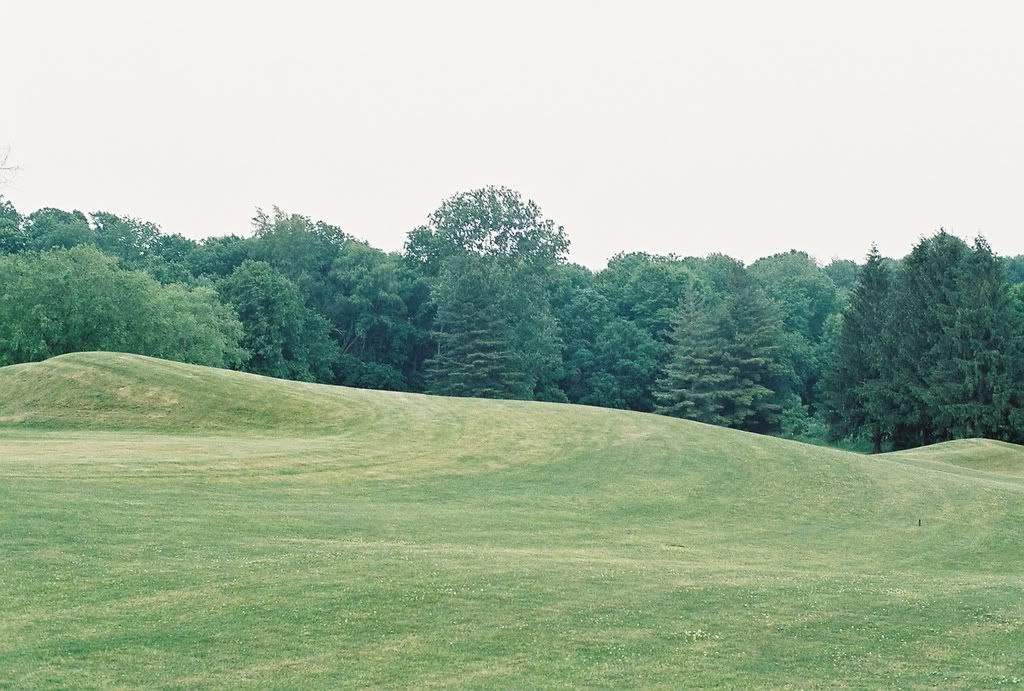
A little further up the fairway the player is given a little peek of the green.
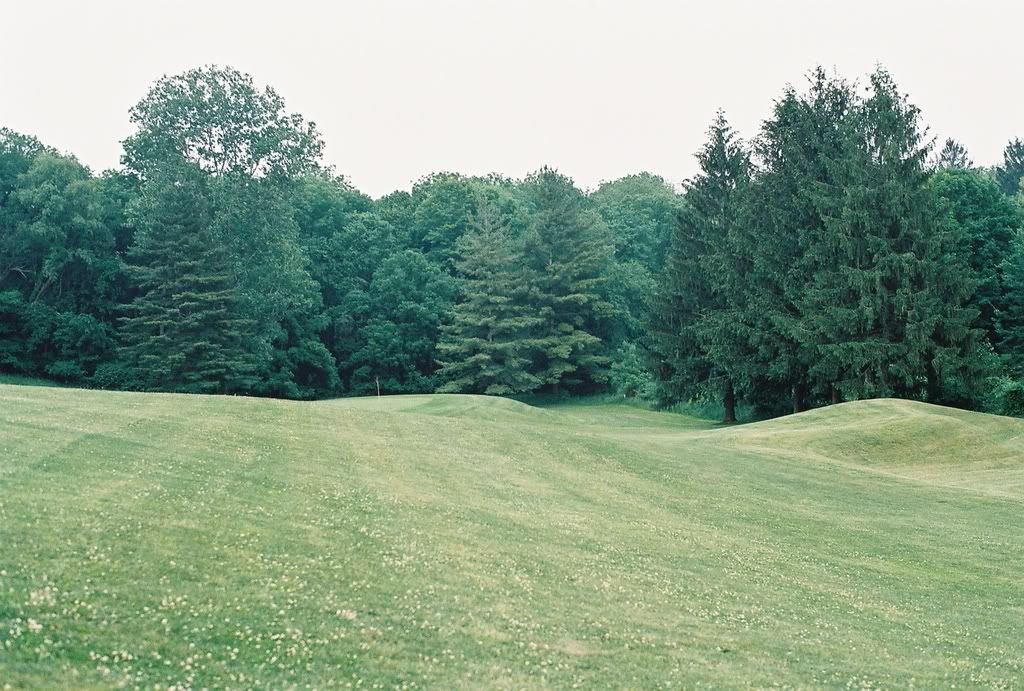
The strategically placed bunker on the left pointed out above protects the direct route to the hole, a ramp down this steep slope to the green. Very dramatic land used to great effect.

Hole #2
Ran describes the 2nd as a Redan. As designers of highly original short holes did L/M also resort to template holes of MacDonald and Raynor? Giving credence to this theory, several courses there are holes that a very similar to the typical Raynor “Short Hole.”
Raynors “Short” at Mountain Lake (Kyle Harris Photo)
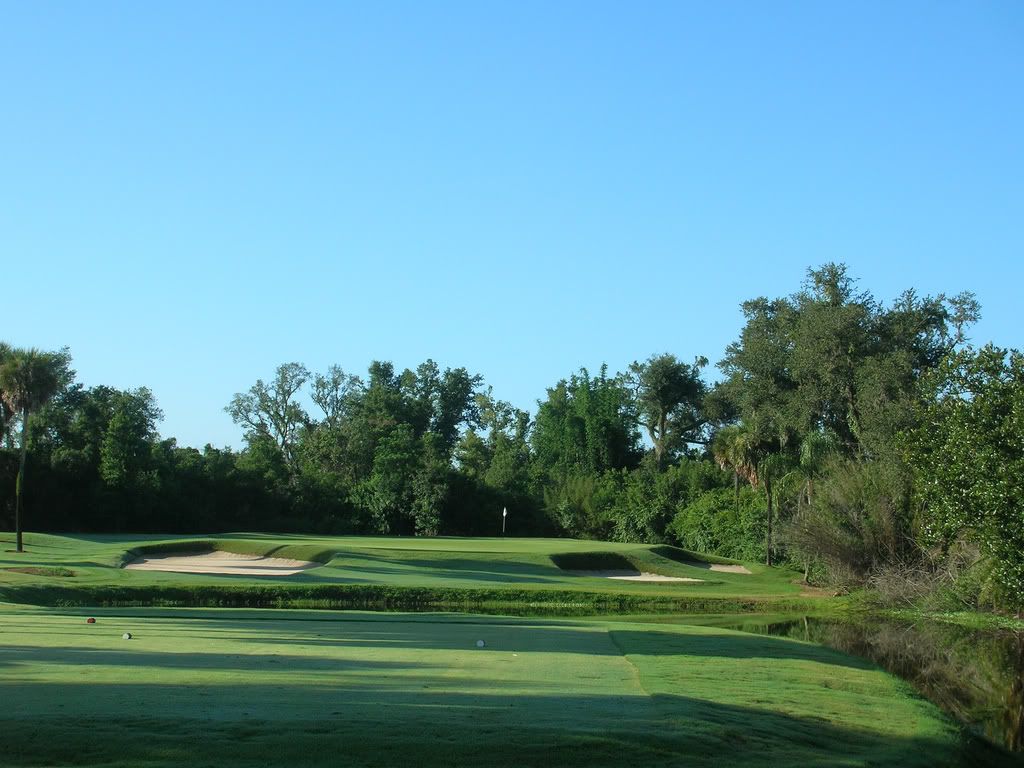
Langford’s “Short” at Spring Valley #3 (Hole is missing bunkers that would wrap around the left side of the green.)

Many cite holes such as Lawsonia’s 4th and 12th and Culver’s 2nd as medium length par 3's that exhibit Redan like characteristics. However, I don’t see a slavish approach to the redan template in these L/M holes. I think one is hard pressed to call either hole at Lawsonia a Redan. I’m also not sure Culver’s 2nd was intended to be a Redan. Its hard to tell given the extent of lost green. It does have the slight mounding to the right, but the original green seems to have been more oval than the typical Redan.
Nonetheless #2 is a terrific hole with a honest mid-iron shot which needs to carry the valley and avoid the frighteningly deep fronting bunker on the left. Even more exciting are the deep grass bunkers behind the green. In some respects Culver’s 2nd reminded me more of Spring Valley’s 7th, a stunning little par 3 traversing from one ridge to another.
Culver #2

Spring Valley #7 (Hole is missing large bunkers left and right)
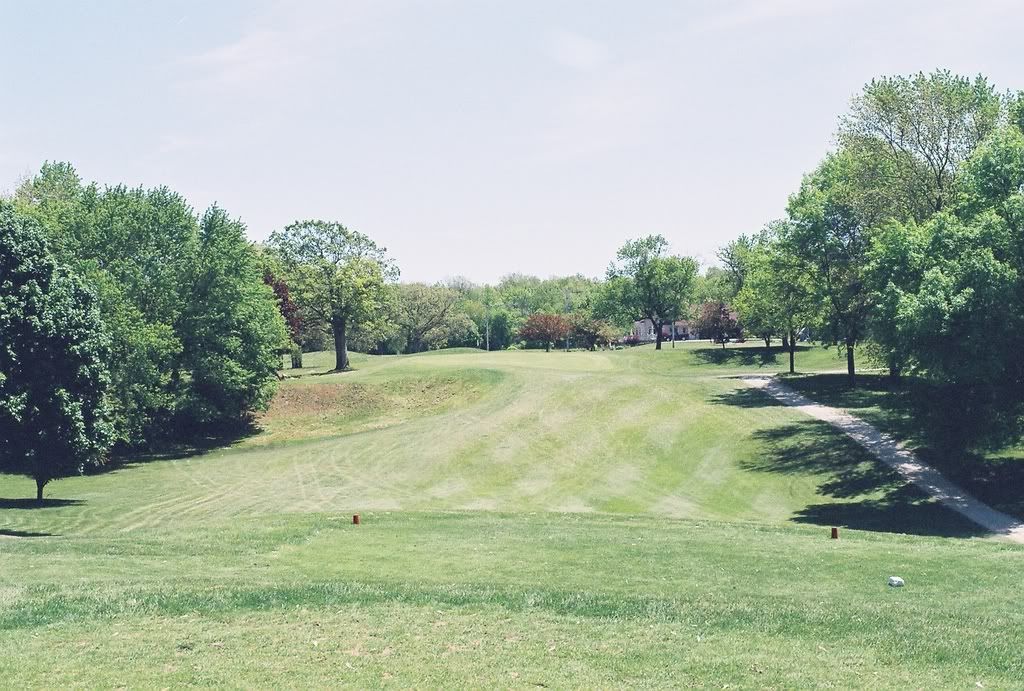
Hole#3
Another strong par 3 negotiating the valley in the opposite direction of the 2nd. The hole features two sets of tees to allow it to played from 140 and 188 when making two loops around the course. Imagine my surprise upon seeing this green to see a shrunken, yet identical version of one of the most distinctive greens at Lawsonia, the severely two-tiered 6th. Ran’s picture shows the Culver green much better than mine. The photos do not show the extent of the similarity, it is uncanny.
Culver #2
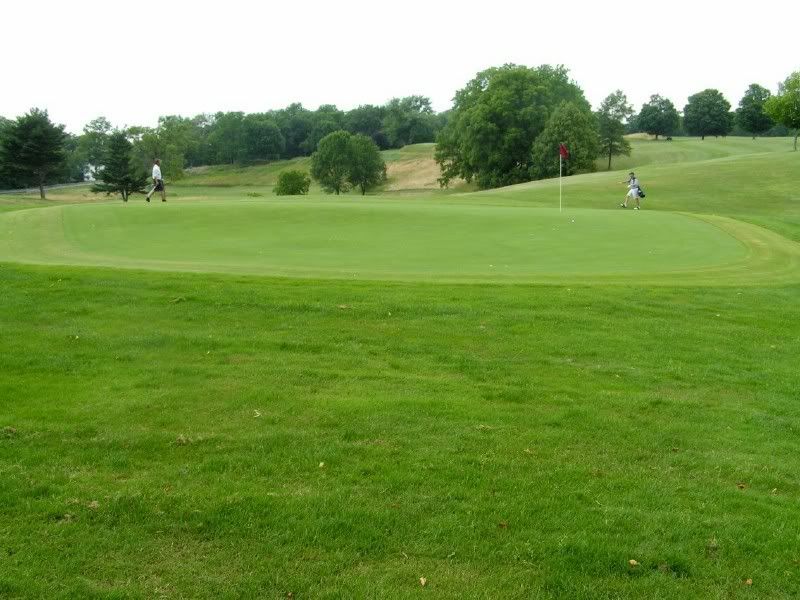
Lawsonia #6

Hole #3
One of Culver’s best holes that takes maximum advantage of the rugged depression that skirts the entire left side of the hole. Did L/M enhance the depression by using this the area to obtain their fill. Did they use a similar technique at Lawsonia in the valley fronting the 11th tee.
Waste Area on Culver’s 4th (Ran’s Photo)

Lawsonia’s 11th

Another aspect of #4 is the strategic use of a solitary tree. The outside of the dogleg, the safer and flatter right side of the fairway, is defended by a lone tree in the 1951 aerial. Play safe to the right of the tree and you risk running through the fairway and being blocked out by the tree. Play left of the tree and a slight pull brings the depression on the left into play. L/M also used trees strategically on the 1st and 11th at Butterfield and most notably on the 13th at Lawsonia.
Culver's 4th with the tree guarding the right side of the fairway. There are now several trees there forming a barrier to the driving range. (Ran's photo)
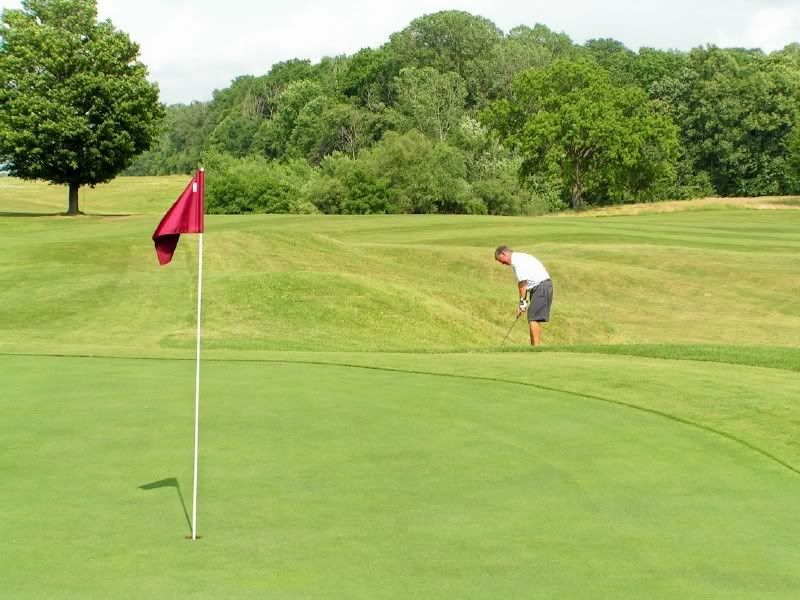
Butterfield’s 1st. Originally only the tree defended the fairway; the bunker was added later.

Butterfields 11th viewed from behind. Hit over the oak on this par 3.
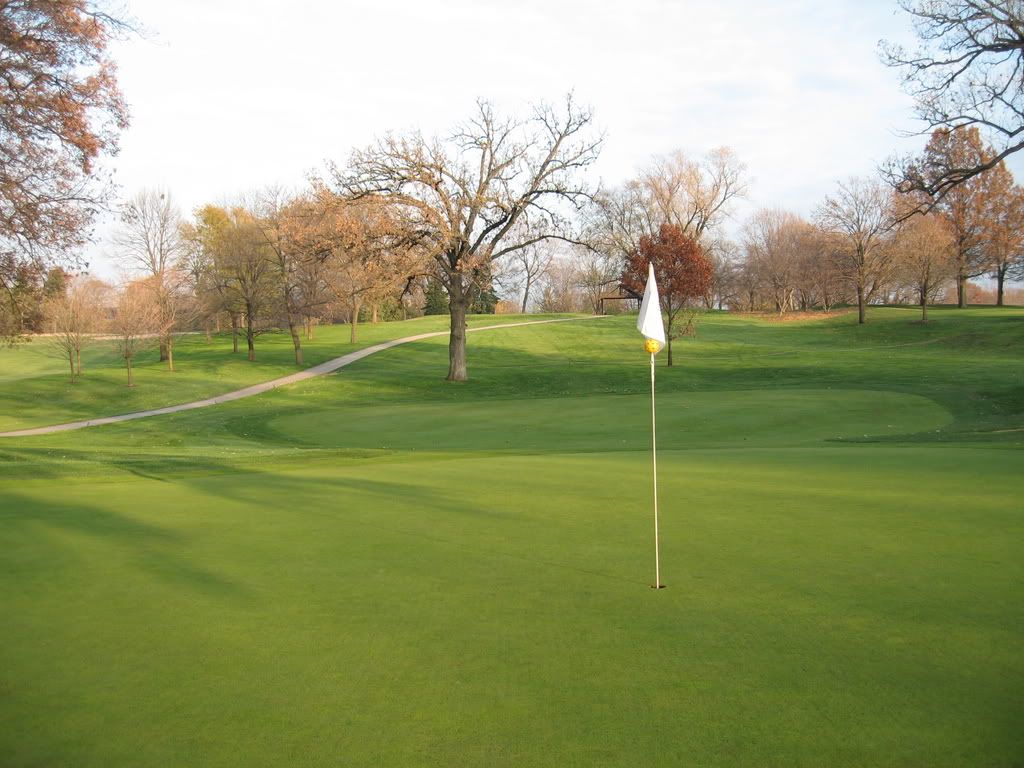
Lawsonia’s 13th. Lone tree at 180 yds out on the 560 par 5. Note the old tree is dying and a replacement has already been planted.
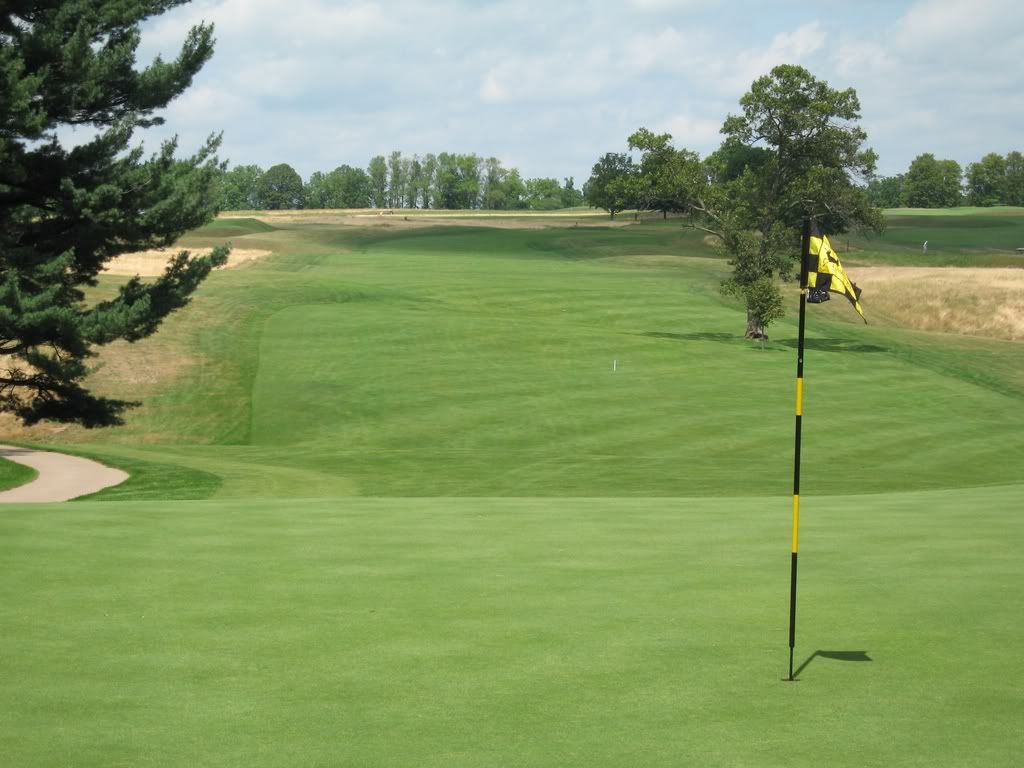
Hole# 5
Another short, rolling par 5. On par 5s in particular L/M liked to use crests of hills to hide the next shot. The 9th at Lawsonia and 4th at Spring Valley both exhibit this trait. The green is also severely sloped from back to front much like the 6 ft drop on the 17th at Spring Valley. Even at very slow green speeds my ball rolled 20 feet down hill when I hit some putts on the left side of the green.
Only the roof of a building that didn’t exist when the course was built shows the way for the 2nd shot.

The view from over the crest of the hill.
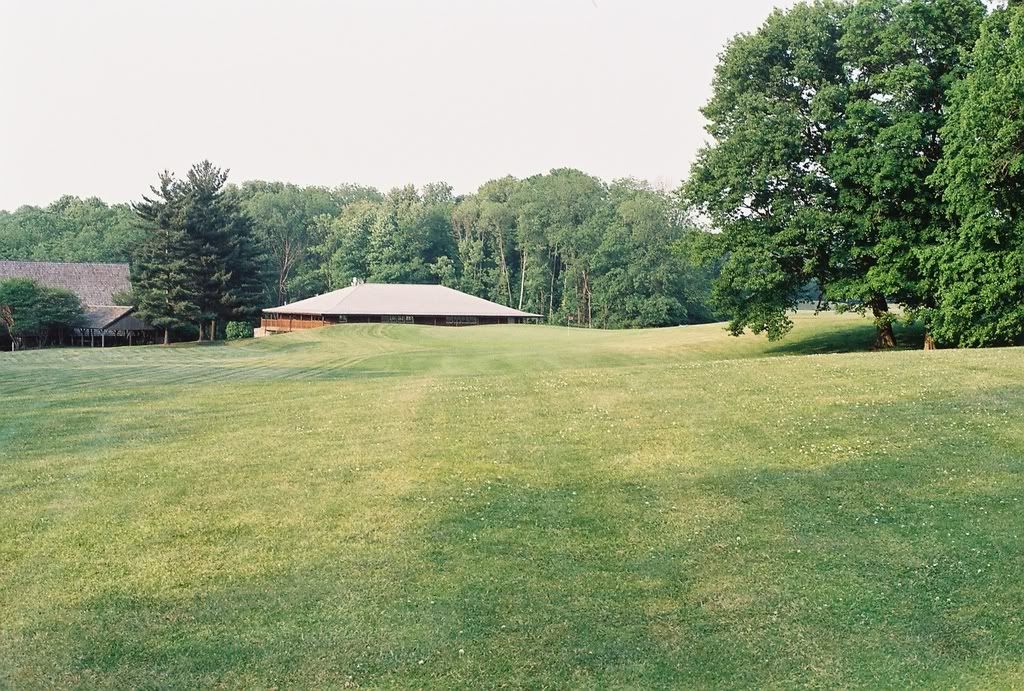
Thoughts on the other 4 holes and the greens at Culver to come.